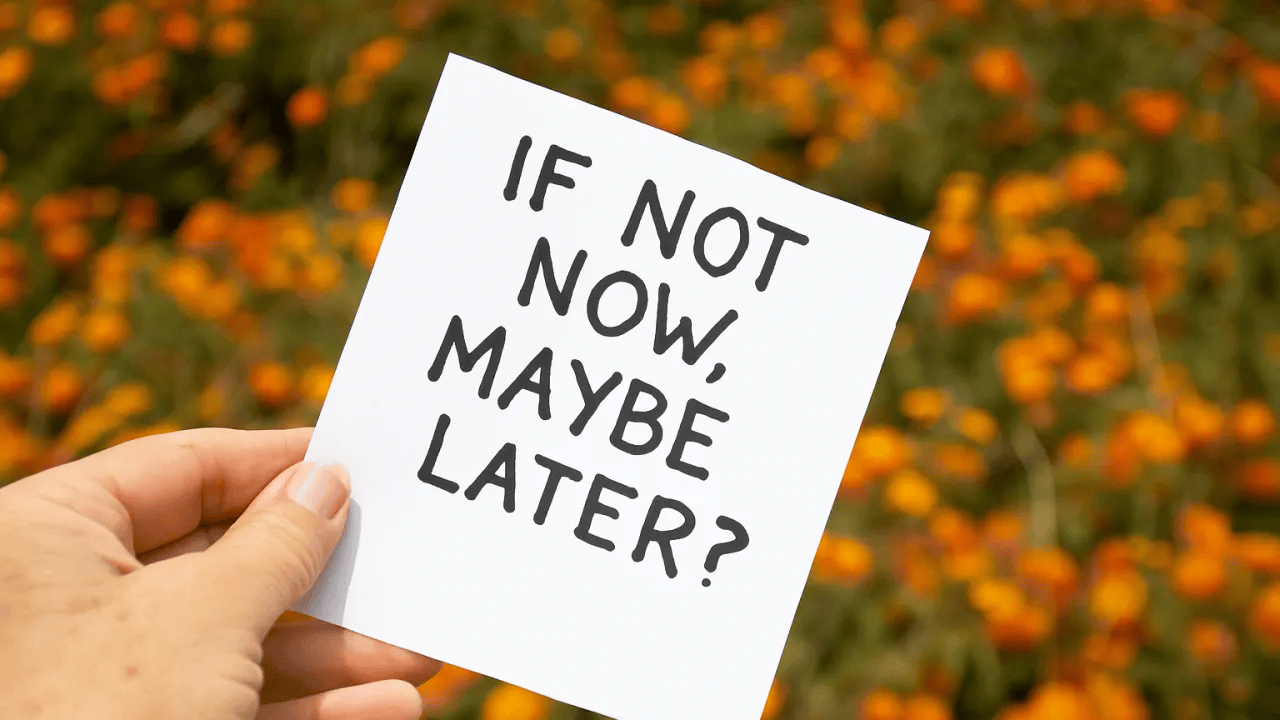We’ve become experts at demanding things NOW.
Sign up now.
Subscribe now.
Enable notifications now.
Create an account now.
Every modal and every prompt feels like it’s shouting at users to commit immediately.
But what if the smartest thing we could do is give people permission to wait?
There’s a pattern quietly reshaping how users engage with digital products, and it’s not about persuasion or clever dark patterns.
It’s about something far more powerful: autonomy.
The ability to say “not right now” without consequence.
To postpone without penalty. To defer without feeling like you’ve failed.
This is the power of “maybe later.”
And if you’ve ever watched a user abandon your beautifully designed flow because they felt cornered, you already know why this matters.
📌 What’s Inside
- Why forcing decisions rarely works
- The psychology of autonomy and control
- Where deferment patterns actually work
- The cost of demanding “now”
Why forcing decisions rarely works🚫
You’ve just opened an app for the first time.
Before you’ve even seen what it does, a modal demands access to your notifications.
Another wants your location.
A third insists you create an account.
Each demand feels like a tiny act of aggression. And psychologically, that’s exactly what it is.
Back in 1966, psychologist Jack Brehm introduced the concept of psychological reactance — the motivational state that kicks in when we feel our freedom is being threatened.
When individuals perceive their freedom of choice is being restricted, they experience psychological reactance, a motivational state aimed at reclaiming that freedom, often resulting in them doing the opposite of what they feel pressured to do.
We’re still building interfaces as if psychological reactance doesn’t exist.
We force account creation right away.
We demand notification permissions before users understand the value.
We present aggressive “limited-time” pop-ups during browsing.
And then we wonder why users bounce.
The forbidden fruit becomes more desirable. The forced becomes repellent. It’s triggering resistance.
So how many users have we lost not because they didn’t want our product, but because we made them feel like they had no choice but to use it?
The psychology of autonomy and control 🧠
The antidote to reactance isn’t manipulation. It’s autonomy.
Edward Deci and Richard Ryan’s Self-Determination Theory identifies autonomy as one of three fundamental psychological needs.
Autonomy concerns a sense of initiative and ownership in one’s actions, supported by experiences of interest and value and undermined by experiences of being externally controlled, whether by rewards or punishments.
Conditions supporting the individual’s experience of autonomy, competence, and relatedness foster the most volitional and high quality forms of motivation and engagement for activities, including enhanced performance, persistence, and creativity.
When users feel autonomous, they engage more deeply.
When they feel controlled, they withdraw (or resist).
The difference between “You must sign up now” and “You can sign up later” is the difference between external control and volitional choice. Between coercion and invitation.
And here’s what’s fascinating: giving users the option to postpone doesn’t mean they’ll never act.
It means they’ll act when they’re ready. Which makes the engagement authentic rather than coerced.
Where deferment patterns actually work ✅
Onboarding and account creation 🚀
Luke Wroblewski, Product Director at Google, has been championing what he calls “gradual engagement” for years.
The principle is beautifully simple: demonstrate value before demanding commitment.
Gradual engagement involves postponing registration for as long as possible — usually until the moment when users must register in order to progress further.
Duolingo understood this intuitively.
Instead of demanding account creation upfront, they let users complete an entire language lesson first.
By allowing their users to engage with the Duolingo app gradually, the actual registration feels like a small step within a larger process, instead of a frustrating obstacle on their path to achieving value.
It’s about respecting users’ need to understand what they’re committing to.
How many sign-ups are you losing because you’re asking too early?
Checkout flows 🛒
Baymard Institute has conducted extensive research on checkout abandonment. Their finding is stark: 26% of users abandon when forced to create an account, and offering a guest checkout option while highlighting the benefits of account creation can help mitigate this issue.
The solution? Guest checkout. But not hidden, shame-laden guest checkout buried beneath three account creation prompts. Prominent, pressure-free guest checkout.
Despite the increased friction, 42% of sites interrupt users prior to or during the checkout flow to suggest they create an account, delaying some users in completing their checkout while causing others to become so distracted that they leave altogether.
The better approach might be to save account creation for the confirmation step of checkout, allowing users to focus on completing their primary goal first.
Then, only then, invite them to create an account for future convenience.
Baymard’s research found that sites that don’t require account creation see a 10–30% increase in conversion.
That’s a fundamental shift in how users respond when given autonomy.
Here’s the paradox: the more desperately you try to force account creation, the fewer accounts you’ll create. So why are we still doing it?
Notifications and permissions ⚙️
The iOS notification snooze feature exists because Apple understands something fundamental about human attention: forcing engagement in the moment often means losing engagement long-term.
Users need control over when they engage with content. Not whether — when.
A notification that can be snoozed is a notification that respects the user’s context.
A notification that can’t be dismissed without a binary choice is an interruption masquerading as engagement.
Don’t ask for notification permissions at signup if you don’t need them yet.
Don’t demand preferences before users understand what preferences matter. Don’t force choices before users have context.
When have you ever thought, “I’m so glad that app demanded my attention right now”?
Progressive disclosure 👁️
The principle is simple: strategically reveal information in stages, presenting only what the user needs at a particular moment.
Don’t ask for a phone number at signup if you don’t need it yet.
Don’t demand shipping preferences before users have selected a product. Don’t force profile completion when users are trying to accomplish a specific task.
The cost of demanding “now” ⚖️
Here’s what happens when we don’t give users permission to wait:
We train them to dismiss everything immediately.
Every modal becomes noise.
Every prompt becomes an obstacle to route around.
Every permission request becomes an automatic “no” because users have learned that saying yes to everything, immediately, leads to chaos.
We optimize for short-term compliance at the expense of long-term trust.
Users who feel forced into decisions become users who feel manipulated. And manipulated users don’t become loyal users.
They become users actively looking for alternatives.
The shift toward deferment patterns isn’t about being nice to users (though it is that). It’s about being smart about engagement.
We’ve spent years obsessing over conversion funnels trying to eliminate every instance of user friction.
But we’ve confused “friction” with “choice.” Giving users the option to postpone isn’t friction. Forcing immediate decisions is.
So here’s the question we should be asking ourselves:
Are we building experiences that demand immediate commitment because we’re afraid users will never come back?
Or are we building experiences valuable enough that users want to come back, on their own terms, when they’re ready?
The answer reveals everything about what we’re actually building and for whom.
Because “maybe later” isn’t users rejecting us. It’s users asking us to earn their trust first.
And that’s exactly the kind of engagement worth waiting for.
Subscribe on Substack⬇️
You might also like:
📚 Sources
- Reactance Theory: Understanding Psychological Reactance
- Self-Determination Theory by Deci & Ryan
- Sign Up Forms Must Die by Luke Wroblewski
- Baymard Institute: Save Account Creation for the Confirmation Step
- Gradual Engagement Boosts Twitter Sign-Ups by 29%
Share this article:



